Day 2 :
Keynote Forum
Xudong Huang
Harvard Medical School, USA
Keynote: Developing nanoparticle-based molecular imaging probe for Alzheimer’s diseaserelated enzymes
Time : 08:40-09:20

Biography:
Abstract:
Keynote Forum
Xudong Huang
Harvard Medical School, USA
Keynote: Developing nanoparticle-based molecular imaging probe for Alzheimer’s diseaserelated enzymes
Time : 08:40-09:20

Biography:
Abstract:
Keynote Forum
Dae Joon Kung
Sungkyunkwan University, South Korea
Keynote: Development of universal transfer technique for chemical vapor deposited 2-dimensional films
Time : 09:20-10:00

Biography:
Abstract:
Keynote Forum
Istvan Toth
University of Queensland, Australia
Keynote: Nanotechnology based delivery systems for vaccines
Time : 10:00-10:40
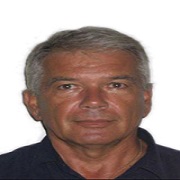
Biography:
Abstract:
Keynote Forum
May Alrashed
King Saud University, Saudi Arabia
Keynote: The antibacterial effect of green and chemically synthesized silver nanoparticles on extended spectrum β- lactamase (ESBL) and carbapenemases producing enterobacteriaceae (CPE)
Time : 11:00-11:40

Biography:
Abstract:
Keynote Forum
Bonex Wakufwa Mwakikunga
DST/CSIR National Centre for Nano-Structured Materials, South Africa
Keynote: A computerized breath analyser device based on a micro-nano-chip of VO2 nanoparticles for personal pain-free determination of blood glucose levels in a type 1 diabetes mellitus patient
Time : 11:40-12:20

Biography:
Abstract:
Keynote Forum
Jyh-Ping Chen
Chang Gung University, Taiwan
Keynote: Composite electrospun aligned PLGA/curcumin/heparin nanofibrous membranes for wound dressing application
Time : 12:20-13:00

Biography:
Abstract:
Keynote Forum
Toyoko Imae
National Taiwan University of Science and Technology, Taiwan
Keynote: Nanocomposites for encyclopedia of bioanalytical methods for bioavailability and bioequivalence studies of pharmaceuticals
Time : 13:50-14:30
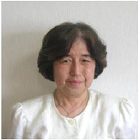
Biography:
Abstract:
- Bionanotechnology | Nanoscale materials | Nanocomposites | Nanoparticles and Nanomedicine | Emerging Nanomedicine | Computational Studies in Nanoparticles | Research and Development of Nanomedicine
Location: las vegas, USA
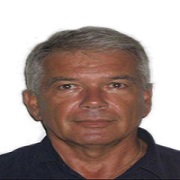
Chair
Istvan Toth
The University of Queensland, Australia

Co-Chair
Jordi Arbiol
Catalan Institute of Nanoscience and Nanotechnology, Spain Session
Session Introduction
Long-ping Wen
South China University of Technology, China
Title: Exploiting nanomaterial-induced pro-survival autophagy for cancer therapy
Time : 16:10-16:30
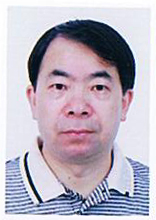
Biography:
Abstract:
Daniel Chojnowski
Howard & Howard Attorneys PLLC, USA
Title: The never-ending internal struggle: Do I disclose my invention and attempt to obtain a patent or forgo a patent and keep it as a trade secret?
Time : 16:30-16:50
Biography:
Abstract:
Shuhua Bai
Husson University, USA
Title: Exosome nanovesicles for the homing delivery of therapeutics into autologous cancer cells
Time : 16:50-17:10
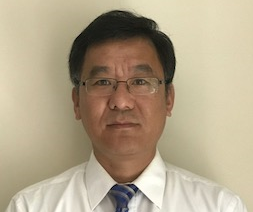
Biography:
Abstract:
Amparo Verdu Solis
Bioinica, Spain
Title: Optinanopro: Novel nanocomposites and nanocoatings and their applications in the packaging, automotive and solar panel processing lines
Time : 17:10-17:30
Biography:
Abstract:
Sallahuddin Panhwar
University of Engineering & Technology, Pakistan
Title: Amparo Verdu Solis holds a University Degree in Industrial Chemistry by the Polytechnic University of Valencia and Master’s in Plastics and Rubber Materials. For 10 years, she developed her career as Researcher in AIMPLAS, Plastics Technology Centre. Currently, she is the R&D Project Manager of Bioinicia, SL, experts in Nanotechnology and Electro-Hydro Dynamic Processing. She has collaborated as an Expert Member in the European Committee for Standardization CEN/TC 249/WG 7/TG one Biodegradable mulch films. Now, she is involved in SBIOC Spanish BioCluster as President of the Cluster.
Time : 17:30-17:50
Biography:
Abstract:
Shuhua Bai
Husson University, USA
Title: Exosome Nanovesicles for the Homing Delivery of Therapeutics into autologous cancer cells
Biography:
Abstract:
- Nanoscale materials | Sustainable (or) Green Nanotechnology | Nanofabrication | Nanocomposites| Smart nanotechnology | Toxicology of Nanoparticles |Research and Development of Nano Medicine | Polymer Nanoparticles and Nanomedicine | NanoParticles and Nanomedicine
Location: Las Vegas, USA

Chair
Xudong Huang
Harvard Medical School, USA
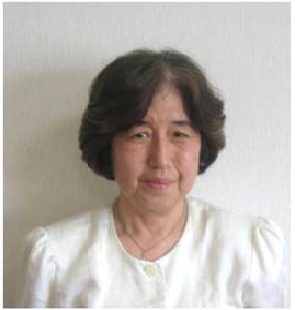
Co-Chair
Toyoko Imae
National Taiwan University of Science and Technology, Taiwan Session Introduction
Session Introduction
Nicky Thomas
University of South Australia, Australia
Title: A Trojan Horse strategy for the delivery of biologicals
Time : 14:15-14:40

Biography:
Abstract:
Muhammad Yasir Ali,
Philipps University Marburg, Germany
Title: Aptamer conjugated nanoparticles as carrier for targeted anticancerous drug
Time : 14:40-15:05

Biography:
Abstract:
Arend Laurence Mapanawang
Yayasan Medika Mandiri Foundation, Indonesia
Title: Chemical bonding characters of love herbal medicine
Time : 15:05-15:30

Biography:
Abstract:
Imran Tariq
Philipps University of Marburg, Germany
Title: Enhanced gene delivery by lipid triblock nanocarriers
Time : 15:30-15:55
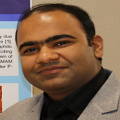
Biography:
Abstract:
Hendry Izaac Elim
Pattimura University, Indonesia
Title: Electronics physical system of large antioxidant structure in herbal medicine based zingiberaceae fruit: Understanding and application
Time : 16:15-16:40

Biography:
Abstract:
Fatemeh Mir Najafi Zadeh
University of New South Wales, Australia
Title: Synthesis of low toxic quantum dots for bioapplications
Time : 16:40-17:05
Biography:
Abstract:
Imran Tariq
Philipps University of Marburg, Germany
